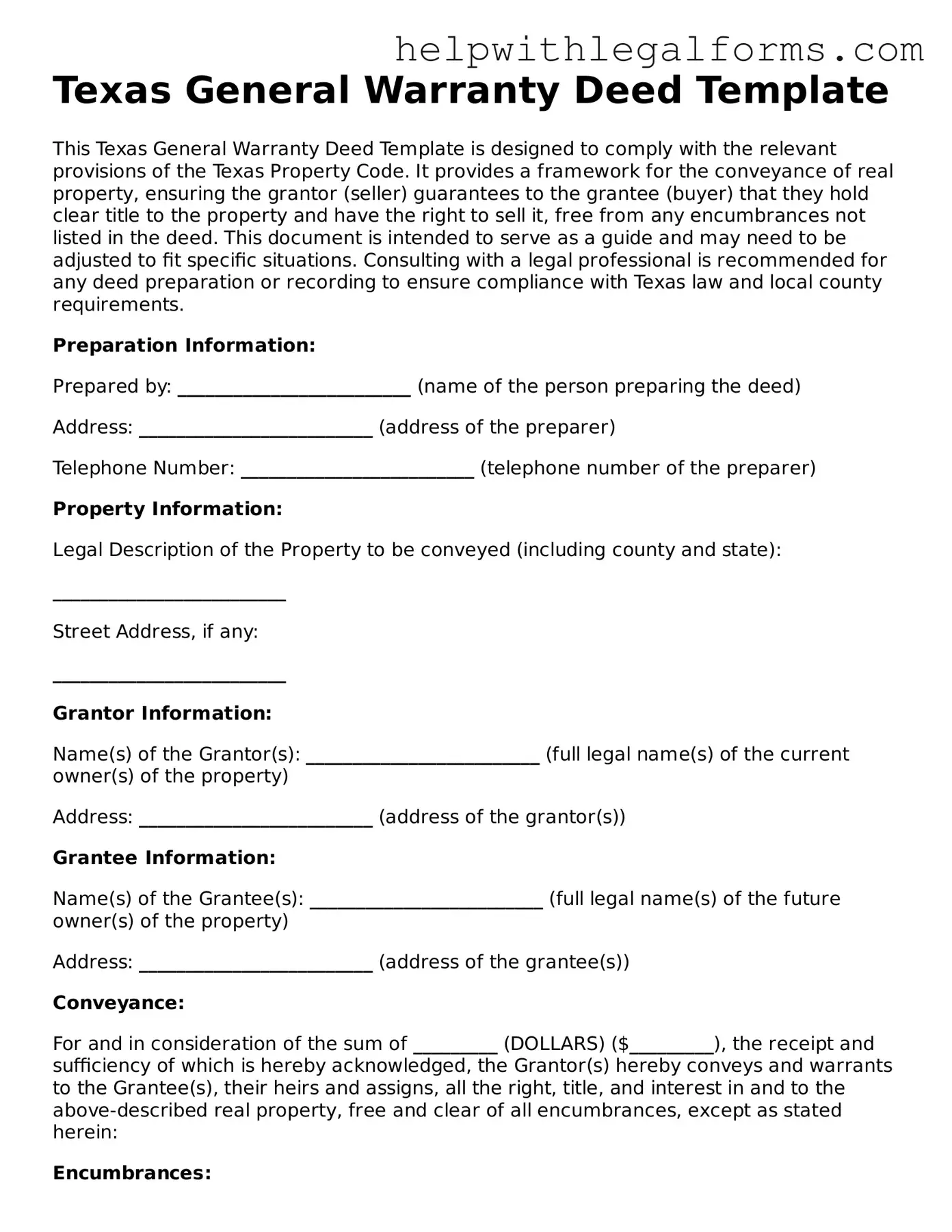Texas General Warranty Deed Template
This Texas General Warranty Deed Template is designed to comply with the relevant provisions of the Texas Property Code. It provides a framework for the conveyance of real property, ensuring the grantor (seller) guarantees to the grantee (buyer) that they hold clear title to the property and have the right to sell it, free from any encumbrances not listed in the deed. This document is intended to serve as a guide and may need to be adjusted to fit specific situations. Consulting with a legal professional is recommended for any deed preparation or recording to ensure compliance with Texas law and local county requirements.
Preparation Information:
Prepared by: _________________________ (name of the person preparing the deed)
Address: _________________________ (address of the preparer)
Telephone Number: _________________________ (telephone number of the preparer)
Property Information:
Legal Description of the Property to be conveyed (including county and state):
_________________________
Street Address, if any:
_________________________
Grantor Information:
Name(s) of the Grantor(s): _________________________ (full legal name(s) of the current owner(s) of the property)
Address: _________________________ (address of the grantor(s))
Grantee Information:
Name(s) of the Grantee(s): _________________________ (full legal name(s) of the future owner(s) of the property)
Address: _________________________ (address of the grantee(s))
Conveyance:
For and in consideration of the sum of _________ (DOLLARS) ($_________), the receipt and sufficiency of which is hereby acknowledged, the Grantor(s) hereby conveys and warrants to the Grantee(s), their heirs and assigns, all the right, title, and interest in and to the above-described real property, free and clear of all encumbrances, except as stated herein:
Encumbrances:
List any easements, restrictions, or other encumbrances affecting the property:
_________________________
Signatures:
This document was signed on the ______ day of _______________, 20__.
Grantor(s) Signature(s): ___________________________________
Grantee(s) Signature(s): ___________________________________
Notarization:
This document was acknowledged before me on this ______ day of _______________, 20__, by ___________________________ (name of grantor(s)) and ___________________________ (name of grantee(s)).
Notary Public: ___________________________________
My Commission Expires: ___________________________________
